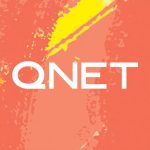World
Funding Africa’s Infrastructure Gap
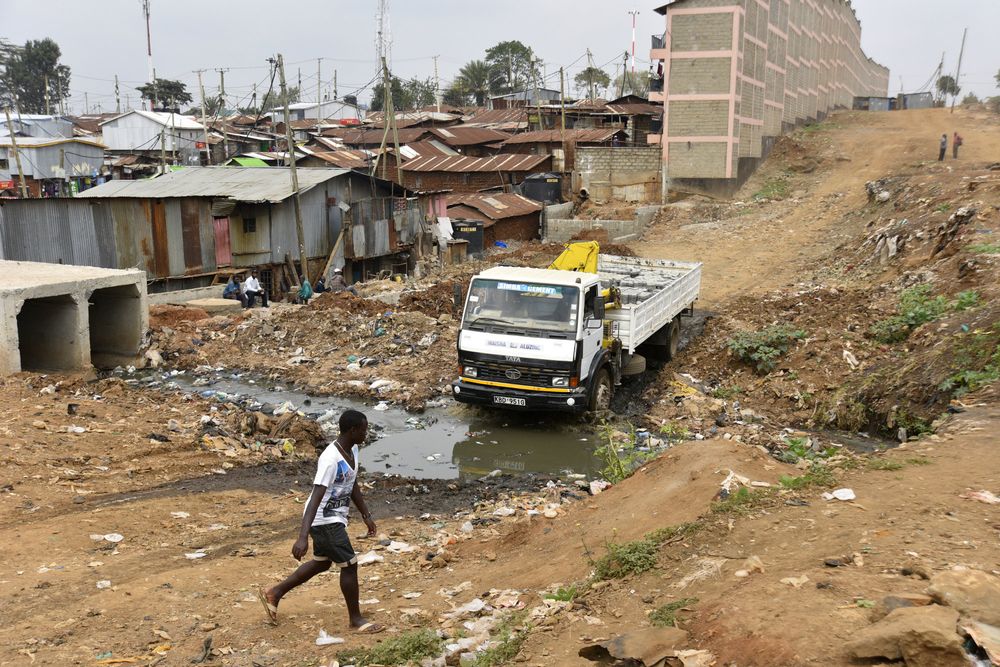
Key to enabling African economies to make the most of their opportunities is developing infrastructure in the region. Across the continent, new laws are being implemented and alternative sources of infrastructure funding are being sought in order to kick-start direly needed infrastructure projects. At the centre of it all is China, which is providing alternative sources financing to countries in Africa that have not been able to access funding in more traditional ways. The benefits are numerous, but African countries are also concerned about their growing dependence on China.
Research released in 2018 from Baker McKenzie and IJGlobal (research) with data drawn exclusively from fully financed projects and excluding recent announcements of government funding commitments, shows that the value of loans from Chinese financing of energy and infrastructure projects in Africa almost trebled between 2016 and 2017, from $3 billion to $8.8 billion..
“As China’s Belt and Road Initiative (BRI), a multi-billion dollar plan to link Asia, Europe and Africa, is actively being implemented, we expect this amount will increase even further in the coming years,” says Wildu du Plessis, Head of Banking & Finance at Baker McKenzie in Johannesburg.
According to the research, Chinese banks have been active lenders to infrastructure projects in 19 different countries in Africa in the past four years. Infrastructure projects in Ethiopia have received $1,8 billion since 2014, Kenyan projects $4,8 billion, Mozambique infra deals $1,6 billion and Nigerian projects $5 billion from Chinese lenders. South African infrastructure projects have received $2.2 billion from Chinese lenders since 2014, Zambia has received $1.5 billion and Zimbabwe has seen $1.3 billion in loans from Chinese policy lenders since 2014.
As one of South Africa’s largest trading partners, China plays an important role in infrastructure investment in this country too. At the BRICS Summit Energy in 2018, China pledged to invest USD 14.7bn in South Africa and to grant loans to state owned enterprises Eskom and Transnet.
Du Plessis notes that even though the South African infrastructure funding gap is not as severe as other countries in Africa, there is a still difficulty in mobilising funds for infrastructure development and related projects because traditional funders take time to decide on whether to get involved.
Stanley Jia, Partner in the Beijing Office of Baker McKenzie, notes, “As part of the mobilisation of different sources of funding to fill the infrastructure gap, there is a big bucket of Chinese funding that can be used for infrastructure projects in Africa. The increasing appetite from China for funding infrastructure projects as part of its BRI means they are happy to partner with local development finance institutions and other international funders.”
According to Kieran Whyte, Head of Energy, Mining & Infrastructure at Baker McKenzie in Johannesburg, “A big attraction of the BRI for both African governments and project sponsors is that it assists the speed of project implementation. Project stakeholders advise that the whole process is a lot quicker than other options.”
Jia notes that, “Chinese policy lenders also assist in providing liquidity in that they are willing to negotiate with countries that have financial constraints that deny them access to traditional capital.”
Du Plessis notes, however, that there is rising concern amongst African sovereigns who are worried about the long term effects on their dependence on China.
“This is even though China has reiterated that it wants to be considered a responsible investor in Africa. It remains to be seen whether this concern has an impact on Chinse involvement in the funding infrastructure projects in future years. African countries have also begun building capacity to correct the imbalance between borrowers and lenders in the negotiation phase so that more balanced agreements can be reached,” he explains.
Senegal and Côte d’Ivoire
Khaled Abou El Houda, Managing Partner of Houda Law Firm in Senegal and Côte d’Ivoire, notes, “Senegal became a BRI partner with China after the two countries signed bilateral deals during Chinese President Xi Jinping’s West Africa trip in late July 2018.
“In addition to plans for improving infrastructure in Senegal, China promised to support the country with anti-terror, peacekeeping and maintaining social stability. However, while the BRI has provided many opportunities for development, the general consensus is the China-Africa relationship could be placed on more equal footing. The challenge for Africa is in establishing where its interests converge with China’s, where they diverge, and how areas of convergence can be shaped to advance African development priorities,” he says.
Houda explains that in order to help fund the infrastructure gap, the Senegalese government adopted the Plan Senegal Emergent (PSE) in 2014, with the overall aim of boosting the economy.
“We saw encouraging signs of 6.8% real GDP growth one year after the PSE’s implementation and it has maintained more than 6% growth in subsequent years. Building on this success, the government is continuing its PSE implementation and related reforms, targeting sectors such as energy, transport infrastructure and agriculture.”
Zimbabwe
In Zimbabwe, Thomas Chagudumba, of Atherstone & Cook notes that the infrastructure funding gap is being addressed in various ways. Funding comes through government floating infrastructure bonds, Public Private Partnerships (PPPs) and off-budget loan funding. Khumalo notes that policy consistency, particularly in respect of currency convertibility, exchange control regulations on repatriation of funds and improved transparency and accountability are all essential to encourage infrastructure funding in Zimbabwe. Further, he explains that it is important to ring fence resources, including foreign currency, for critical inputs in support of ongoing works. This can be done via undertakings from the Reserve Bank of Zimbabwe and government guarantees. Construction and performance bonds could also be used to curb poor project implementation, mismanagement and corruption in the infrastructure sector.
Chagudumba notes that Zimbabwe has also benefited from the BRI with major projects in Zimbabwe including the Kariba South Hydro Power Station and the Victoria Falls International Airport.
“For Zimbabwe, the benefits of the BRI include that it aids in infrastructure development, which in turn benefits economic expansion. The transfer of information and expertise and employment creation are further benefits.”
Mauritius
Mauritius does not have a large infrastructure funding gap as compared to other jurisdictions in Africa, explains Moorari Gujadhur, a barrister at Madun Gujadhur Chambers in Mauritius. “Infrastructure projects in Mauritius tend to focus on either improving current infrastructure (ie large grid separated flyovers) or to introduce new projects (ie light rail transport). These tend to be government to government,” he says.
He explains, “India has provided Mauritius with a grant and loan to fund the development of a light rail transport project, whilst China is making investments in the ports. The new Mauritian airport terminal was entirely funded by China.”
Ethiopia
In Ethiopia meanwhile, bridging the infrastructure gap is more complicated. Mehrteab Leul, Principal of Mehrteab Leul & Associates Law Office in Ethiopia, explains, “In February this year, Ethiopia enacted a new proclamation facilitating PPPs called the Public-Private Partnership Proclamation. According to the proclamation, it is within the powers of the PPP Board to approve PPP projects as well as instruct public bodies/enterprises to carry out a certain project as a PPP.
“According to the policy document, one of the main objectives for PPP projects is to increase the financial resources available for the development of infrastructure services in Ethiopia. All of the 17 recently approved under the PSE centre around the delivery of infrastructure services,” he notes.
Leul says that China and Italy are the prime role players infrastructure investment in Ethiopia. They have made a significant impact on the sector including via developing electricity generation capacity, supplying drinking water in urban and rural areas, developing road infrastructure and building hospitals and other infrastructure investments.
“Since 1957 the Italian contractor Salini Impregilo has completed 20 major projects in Ethiopia, worth a total of €9 billion. Chinese infrastructure investment in Ethiopia totalled $4.7 billion between 2009 and 2012.”
Leul says that in terms of the BRI, a strong win- in situation has developed for both China and Ethiopia.
“In particular, the country has benefited from infrastructure development funding, as well as technological transformation from China to Ethiopia and job creation. In general, it will enable both countries to optimize the benefits from the global market. The Addis Ababa-Djibouti Railway project is a working example of benefits of the BRI,” he says.
Leul cautioned however, that the BRI, “might leave the country open to the risk of troubled debt pressure and increasing dependence on China.”
Tunisia
Omar Besbes of United Advisers in Tunisia notes that all North African countries have signed the Belt and Road Initiative with China. However, the benefits received from this initiative are divergent. While in Tunisia it is only focused on studies of infrastructure projects so far, in Algeria and Morocco some infrastructure projects are already implemented such as seaports and desalination plants.
For North African in countries, the benefits of the BRI are that it allows recipient countries to not have to depend on traditional donors, and gives them the opportunity to benefit from China’s growth. Besbes says that countries other than China that have played a substantial role in infrastructure investment in North Africa include the European Union, Japan France and Germany. As a result on their funding, roads, bridges, ports, airports, electricity production stations and desalination plants have been built in the region.
World
TikTok Signs Deal to Avoid US Ban

By Adedapo Adesanya
Social media platform, TikTok’s Chinese owner ByteDance has signed binding agreements with United States and global investors to operate its business in America.
Half of the joint venture will be owned by a group of investors, including Oracle, Silver Lake and the Emirati investment firm MGX, according to a memo sent by chief executive, Mr Shou Zi Chew.
The deal, which is set to close on January 22, 2026 would end years of efforts by the US government to force ByteDance to sell its US operations over national security concerns.
It is in line with a deal unveiled in September, when US President Donald Trump delayed the enforcement of a law that would ban the app unless it was sold.
In the memo, TikTok said the deal will enable “over 170 million Americans to continue discovering a world of endless possibilities as part of a vital global community”.
Under the agreement, ByteDance will retain 19.9 per cent of the business, while Oracle, Silver Lake and Abu Dhabi-based MGX will hold 15 per cent each.
Another 30.1 per cent will be held by affiliates of existing ByteDance investors, according to the memo.
The White House previously said that Oracle, which was co-founded by President Trump’s supporter Larry Ellison, will license TikTok’s recommendation algorithm as part of the deal.
The deal comes after a series of delays.
Business Post reported in April 2024 that the administration of President Joe Biden passed a law to ban the app over national security concerns, unless it was sold.
The law was set to go into effect on January 20, 2025 but was pushed back multiple times by President Trump, while his administration worked out a deal to transfer ownership.
President Trump said in September that he had spoken on the phone to China’s President Xi Jinping, who he said had given the deal the go ahead.
The platform’s future remained unclear after the leaders met face to face in October.
The app’s fate was clouded by ongoing tensions between the two nations on trade and other matters.
World
United States, Russia Resolving Trade Issues, Seeking New Business Opportunities
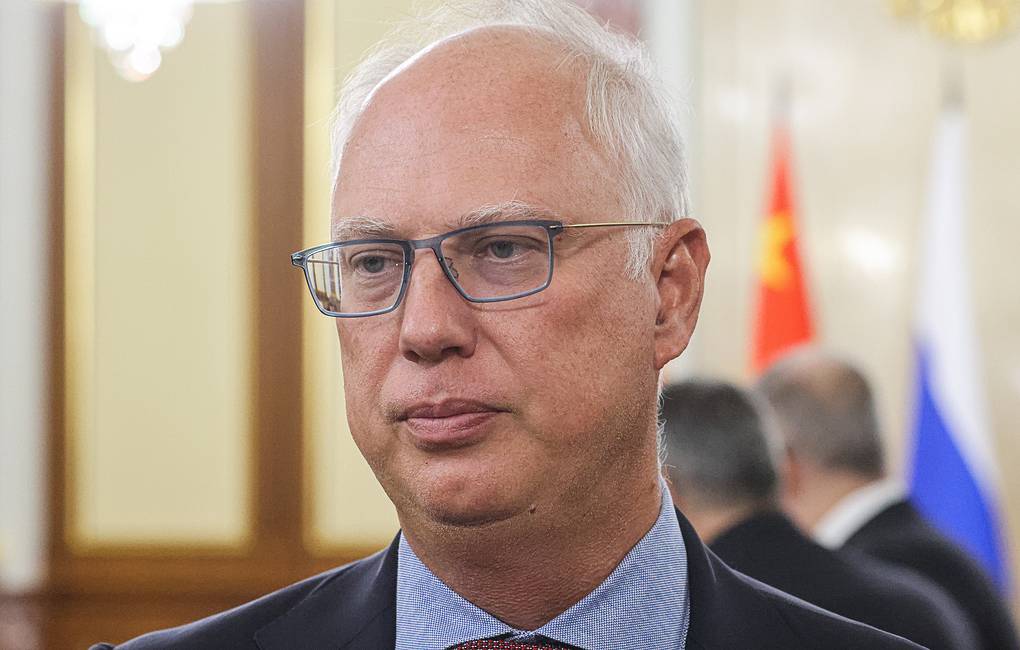
By Kestér Kenn Klomegâh
Despite the complexities posed by Russia-Ukraine crisis, United States has been taking conscious steps to improve commercial relations with Russia. Unsurprisingly, Russia, on the other hand, is also moving to restore and normalise its diplomacy, negotiating for direct connections of air-routes and passionate permission to return its diplomats back to Washington and New York.
In the latest developments, Kirill Dmitriev, Chief Executive Officer of the Russian Direct Investment Fund (RDIF), has been appointed as Russian President’s Special Envoy to United States. This marked an important milestone towards raising bilateral investment and economic cooperation. Russian President Vladimir Putin tasked him to exclusively promote business dialogue between the two countries, and further to negotiate for the return of U.S. business enterprises. According to authentic reports, United States businesses lost $300+ bn during this Russia-Ukraine crisis, while Russia’s estimated 1,500 diplomats were asked to return to Moscow.
Strategically in late November 2025, the American Chamber of Commerce in Russia (AmCham) has awarded Kirill Dmitriev, praised him for calculated efforts in promoting positive dialogue between the United States and Russia within the framework decreed by President Vladimir Putin. Chief Executive Officer of Russian Direct Investment Fund (RDIF) Kirill Dmitriev is the Special Representative of the Russian President for Economic Cooperation with Foreign Countries. Since his appointment, his primary focus has been on United States.
“Received an American Chamber of Commerce award ‘For leadership in fostering the US-Russia dialogue,’” Dmitriev wrote on his X page, in late November, 2025. According to Dmitriev, more than 150 US companies are currently operating in Russia, with more than 70% of them being present on the Russian market for over 25 years.
In addition, Chamber President Sergey Katyrin and American Chamber of Commerce in Russia (AmCham) President Robert Agee have also been discussing alternatives pathways to raise bilateral business cooperation. Both have held series of meetings throughout this year, indicating the the importance of sustaining relations as previously. Expectedly, the Roscongress Foundation has been offered its platforms during St. Petersburg International Economic (SPIEF) for the American Chamber of Commerce (AmCham).
On December 9, Sergey Katyrin and Robert Agee noted that, despite existing problems and non-economic obstacles, the business communities of Russia and the United States proceed from the necessity of maintaining professional dialogue. Despite the worsening geopolitical conditions, Sergey Katyrin and Robert Agee noted the importance of preserving stable channels of trade and pragmatic prospects for economic cooperation. These will further serve as a stabilizing factor and an instrument for building mutual trust at the level of business circles, industry associations, and the expert community.
The American Chamber of Commerce (AmCham) will be working in the system of the Chamber of Commerce and Industry (CCI) in the Russian Federation, which currently comprises 57,000 legal entities, 130 regional chambers and a combined network of representative offices covering more than 350 points of presence.
According to reports obtained by this article author from the AmCham, promising sectors for Russian-American economic cooperation include healthcare and the medical industry, civil aviation, communications/telecom, natural resource extraction, and energy/energy equipment. The United States and Russia have, more or less, agreed to continue coordinating their work to facilitate the formation of a more favorable environment for Russian and American businesses, reduce risks, and strengthen business ties. Following the American-Russian Dialogue, a joint statement and working documents were adopted.
World
Reviewing the Dynamics of Indian–Russian Business Partnership
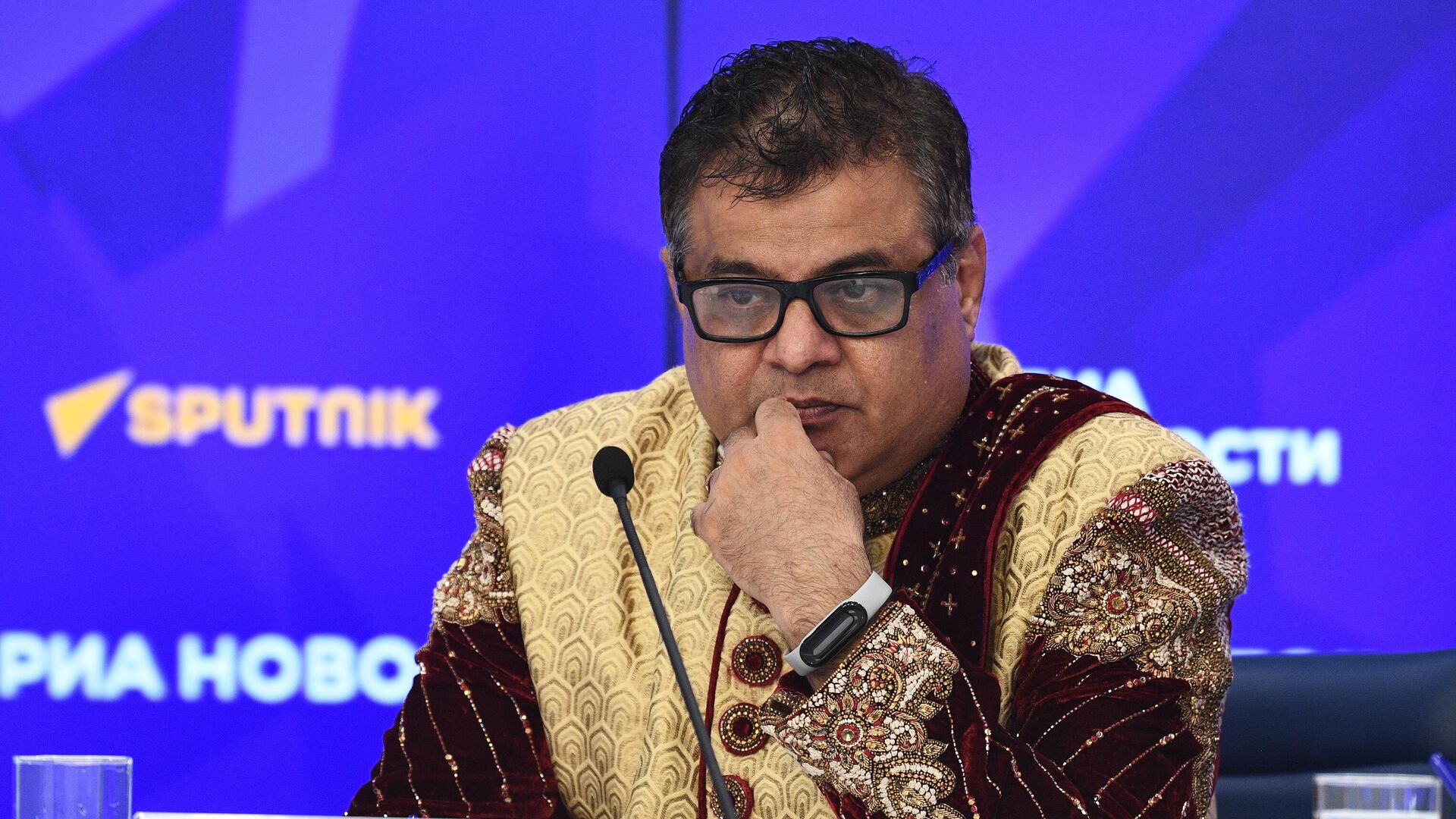
By Kestér Kenn Klomegâh
The Executive President of the Indian Business Alliance (IBA), Sammy Manoj Kotwani, discusses the landmark moment in deepening Russian-Indian collaboration. Kotwani explains the groundbreaking insights into President Vladimir Putin’s working visit to India, the emerging opportunities and pathways for future cooperation, especially for the two-sided economic collaboration. Follow Sammy Manoj Kotwani’s discussions here:
Interpretation of the latest development in Russian-Indian relations
From my viewpoint in Moscow, this visit has effectively opened a new operational chapter in what has always been described as a “Special and Privileged Strategic Partnership.” It did not just reaffirm political goodwill; it translated that goodwill into a structured economic roadmap through Programme 2030, a clear target to take bilateral trade to around USD 100 billion by 2030, and concrete sectoral priorities: energy, nuclear cooperation, critical minerals, manufacturing, connectivity, fertilizers, and labour mobility.
On the ground, the business community reads this summit as a strong signal that India and Russia are doubling down on strategic autonomy in a multipolar world order. Both sides are trying to de-risk their supply chains and payment systems from over-dependence on any single centre of power. This is visible in the focus on national currencies, alternative payment mechanisms, and efforts to stabilise Rupee–Ruble trade, alongside discussions on a Free Trade Agreement with the Eurasian Economic Union and the reinforcement of corridors like the INSTC and the Chennai–Vladivostok route.
In short, my interpretation is that this summit has moved the relationship from “politically excellent but structurally imbalanced” towards a more diversified, long-term economic framework in which companies are expected to co-produce, co-innovate, and invest, not just trade opportunistically.
Significance of the visit for Indian business in Russia and for the Indian Business Alliance (IBA)
For Indian business operating in the Russian Federation, the visit has three immediate effects: confidence, clarity, and continuity. Confidence, because Indian entrepreneurs now see that despite external pressure, New Delhi and Moscow have explicitly committed to deepening economic engagement—especially in energy, fertilizers, defence co-production, nuclear, and critical minerals—rather than quietly scaling it back.
Clarity, because the summit outcomes spell out where the real opportunities lie:
Energy & Petrochemicals: Long-term crude and LNG supply, but also downstream opportunities in refining, petrochemicals, and logistics, where Indian EPC and service companies can participate.
Pharmaceuticals & Medical Devices: Russia’s import substitution drive makes high-quality Indian generics, formulations, and even localized manufacturing extremely relevant.
IT, Digital & AI: There is growing appetite in Russia for Indian IT services, cybersecurity, and digital solutions that are not dependent on Western tech stacks.
Fertilizers, Agro & Food Processing: New joint ventures in fertilizers and agriculture supply chains were explicitly flagged during and around the summit, which is important for both food security and farm incomes.
Continuity, because the Programme 2030 framework and the expected EAEU FTA give businesses a medium-term policy horizon. Tariff reductions, improved market access and predictable regulation are precisely what Indian SMEs and mid-sized companies need to justify long-term investments in Russia.
For the Indian Business Alliance (IBA), this inevitably means more work and more responsibility. We already see increased incoming requests from Indian firms—from large listed companies to first-time exporters—asking very practical questions: Which Russian region should we enter? How do we navigate compliance under the sanctions environment? Which banks are still handling Rupee–Ruble or third-currency settlements? How can we structure joint ventures to align with Russia’s import substitution goals while protecting IP and governance standards?
IBA’s role, therefore, becomes that of economic diplomacy in action: translating high-level summit language into actual B2B meetings, sectoral delegations, regional partnerships, and deal-making platforms such as the India–Russia Business Dialogue in Moscow. This visit will undoubtedly stimulate and intensify IBA’s work as a bridge between the two ecosystems.
India’s current economic presence in the Russian Federation
If we look beyond the headline trade figures, India’s economic presence in Russia today is significant, but not yet commensurate with its potential. Bilateral trade has grown sharply since 2022, largely on the back of discounted Russian oil and coal, making India one of Russia’s top energy customers. However, the structure is still heavily skewed: Russian exports to India dominate, while Indian exports and investments in Russia remain relatively modest and under-diversified.
On the ground in Moscow and across the regions, we see several strong Indian footholds:
Pharmaceuticals: Indian pharma is well-established, respected for its affordability and quality, and poised to deepen localization in line with Russian import substitution policy.
Tea, Coffee, Spices & Food: Traditional segments with deep historical roots, now expanding into ready-to-eat, wellness, and ethnic food categories.
IT & Services: Still under-represented, but with growing interest as Russian entities look for non-Western software, integration, and outsourcing partners.
Diamonds, Textiles, Apparel, and Light Engineering: Present but fragmented, with enormous room to scale, especially if logistics and payment challenges are addressed.
Where India is still behind is on-the-ground investment and manufacturing presence compared to countries like China. Russian policymakers today are clearly favouring investors who help them achieve technological sovereignty and local value addition. For serious Indian companies willing to commit capital, adapt to Russian standards, and accept the complexities of the current environment, this is a period of unusual opportunity. For purely transactional players looking for quick arbitrage, it is becoming progressively harder.
So, I would characterise India’s economic presence as: strategically important, quickly growing in value, but still under-leveraged in terms of depth, diversification, and localization.
Geopolitical pressure from Washington and future predictions
Pressure from Washington—through sanctions, secondary sanctions risk, financial restrictions, and now even tariff measures linked to India’s energy purchases from Russia—is undoubtedly a real and continuing challenge. It affects everything from shipping insurance and dollar transactions to technology transfers and the risk appetite of global banks. In practical terms, it can complicate even a simple India–Russia trade deal if it touches a sanctioned bank, vessel, or technology.
However, my own assessment, based on 35 years of living and working in Russia, is that this pressure will not fundamentally derail India–Russia friendship, but it will reshape how the relationship functions. India’s foreign policy is anchored in strategic autonomy; it seeks strong ties with the United States and Europe, but not at the cost of abandoning a time-tested partner like Russia. Russia, for its part, sees India as a crucial Asian pole in an emerging multipolar world order and as a long-term market, technology partner, and political counterpart in forums like BRICS, SCO, and the G20.
Looking ahead, I see a few clear trends:
Normalization of alternative payment and logistics systems
We will see more institutionalised use of national currencies, alternative messaging systems, regional banks outside the direct sanctions line, and maybe even digital currencies for specific corridors. Rupee–Ruble trade mechanisms that are today seen as “workarounds” will gradually become part of the normal infrastructure of bilateral commerce.
Shift from pure trade to co-production and joint innovation
To reduce vulnerability to sanctions, both sides will push for manufacturing in India and Russia rather than simple exports: defence co-development, localized pharma and medical devices, high-tech and AI collaborations, and joint ventures in critical minerals and clean energy.
Greater role for regions and business associations
Regional governments in Russia (Far East, Arctic regions, industrial hubs) and Indian states will increasingly drive project-level cooperation, supported by platforms like IBA. This “bottom-up” economic diplomacy will make the relationship more resilient than if it relied only on central governments.
Managed balancing by India
India will continue to deepen technology and investment ties with the West while maintaining energy, defence and strategic cooperation with Russia. The challenge will be to manage U.S. and EU expectations without compromising its core national interests. My prediction is that India will stay firm on this course of balanced engagement, even if it means occasional friction with Washington.
In essence, external pressure may complicate the methods of Indo-Russian cooperation, but it is unlikely to overturn the foundations of trust, mutual interest, and long-term complementarity that have been built over decades.
-

 Feature/OPED6 years ago
Feature/OPED6 years agoDavos was Different this year
-
Travel/Tourism9 years ago
Lagos Seals Western Lodge Hotel In Ikorodu
-

 Showbiz3 years ago
Showbiz3 years agoEstranged Lover Releases Videos of Empress Njamah Bathing
-

 Banking7 years ago
Banking7 years agoSort Codes of GTBank Branches in Nigeria
-

 Economy3 years ago
Economy3 years agoSubsidy Removal: CNG at N130 Per Litre Cheaper Than Petrol—IPMAN
-
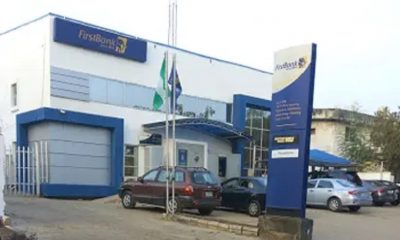
 Banking3 years ago
Banking3 years agoFirst Bank Announces Planned Downtime
-

 Banking3 years ago
Banking3 years agoSort Codes of UBA Branches in Nigeria
-

 Sports3 years ago
Sports3 years agoHighest Paid Nigerian Footballer – How Much Do Nigerian Footballers Earn





